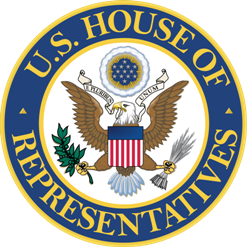Roger Kittelson Could Make History in Minnesota’s 2nd CD Race
The little-known Democrat would be the first major party candidate to appear on a U.S. House general election ballot in both the Gopher and Badger States

Kittelson joins a DFL field which already has two well-funded candidates – opthamologist Mary Lawrence and medical device executive Angie Craig – and would be considered a long shot candidate at this stage of the campaign.
However, under the scenario in which Kittelson does receive the DFL nomination next year, he would make the Upper Midwestern history books – becoming the first major party U.S. House candidate to appear on a general election ballot in both Minnesota and Wisconsin.
In 2008, Kittelson was the Democratic nominee in Wisconsin’s 6th CD race against then 15-term Republican incumbent Tom Petri.
Kittelson won his party’s primary with 62 percent of the vote against physical therapist Mark Wollum.
In the general election, Kittelson was defeated by 27.5 points with 36.2 percent of the vote, which, although a blowout loss, was actually the fifth best showing against the popular Wisconsin Republican across his 18 electoral victories to the chamber dating back to a 1979 special election.
Kittelson campaigned as a pro-life Democrat in that race – another factor which makes him unlikely to secure the DFL nomination in Minnesota next year.
To date, more than 1,100 Wisconsinites and 800 Minnesotans have appeared on the general election ballot in U.S. House contests dating back to statehood in 1848 and 1858 respectively including more than 1,100 major party nominees between the two states.
Kittelson would be the first from a major party to do so from both states.
Of the remaining third party and independent candidates, just one candidate appeared on the ballot in Minnesota and Wisconsin. It seems, though Smart Politics cannot confirm, that an early third party 20th Century Wisconsin congressional candidate named Lynn Thompson also later ran for the nation’s lower legislative chamber from Minnesota.
Thompson ran as a Social Democrat in Wisconsin’s 10th Congressional District in 1910 and won 9.0 percent of the vote in a race won by Republican incumbent Elmore Morse.
Ten years later, a ‘Lynn Thompson’ was the Farmer-Labor nominee in Minnesota’s 5th CD race. Thompson placed second with 23.7 percent behind Republican incumbent Walter Newton.
Thompson would later serve as a Socialist Party presidential elector in 1928.
No other third party or independent candidate ran in a general or special U.S. House election from both Minnesota and Wisconsin.
Follow Smart Politics on Twitter.

THIS WAS A NICE ARTICLE. THANKS,
ROGER